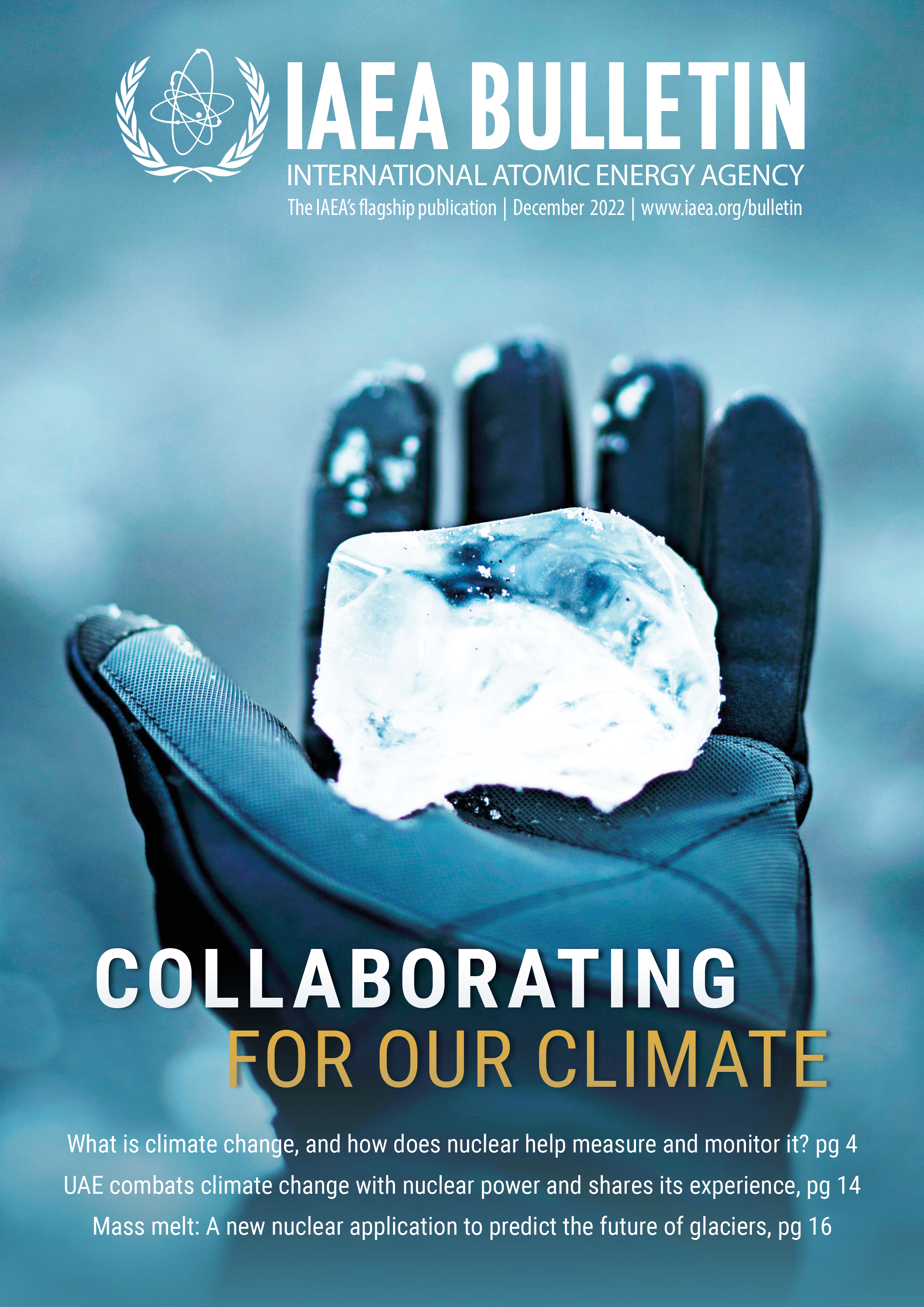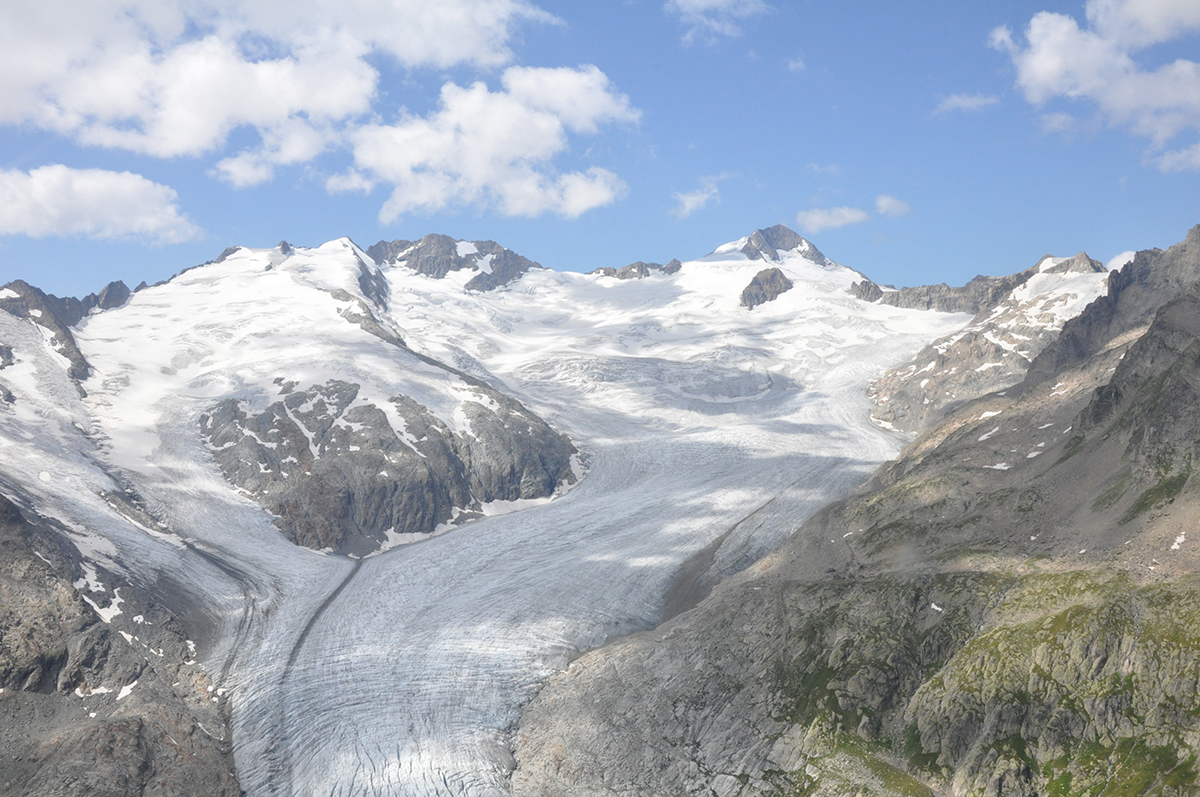Radionuclide detection in ice
In 2019 and 2020, Spiez Laboratory experts and members of the Swiss Armed Forces scaled the Aletsch and Gauli glaciers in the rugged terrain of the Bernese Alps to collect invaluable isotopic data on their ice flows. They extracted around 200 surface ice samples from each glacier, each sample weighing up to 1 kilogram — a large enough quantity to detect the low levels of radionuclides. They then melted the samples and applied radiochemical methods to extract and purify uranium and plutonium isotopes, which they analysed using a highly sensitive instrument called a multi-collector inductively coupled plasma mass spectrometer, or MC-ICP-MS.
The researchers also applied other nuclear techniques that can detect the presence of NWT radionuclides in environmental samples, including high resolution gamma ray spectrometry, which detected the presence of caesium, and liquid scintillation counting, which detected the presence of tritium.
“These data can be used to refine and tune glacier flow models, get a better idea of how fast the glacier is melting, predict its future and calibrate ice flow models for greater precision,” said R?llin. The methods developed by Spiez Laboratory were validated against IAEA reference samples of water from the Irish Sea to ensure accuracy. Reference samples are used by scientists to check that their testing methods yield accurate results. The IAEA makes such samples available to laboratories worldwide.
“Our tests against the IAEA reference material confirmed our ability to analyse incredibly low radionuclide concentrations in water — a millionth of a millionth of a millionth of a gram per kilogram — something that’s quite difficult to do,”
said R?llin.
Spiez Laboratory presented its research at the International Conference on Environmental Radioactivity (ENVIRA 2021) in Greece in 2021, and at the International Conference on Radionuclide Metrology — Low Level Radioactivity Measurement Techniques (ICRM–LLRMT), 2022, in Italy.
Spiez Laboratory has been an IAEA Collaborating Centre since 2016 and, in 2020, was re-designated as such until 2025, in order to support the IAEA’s programmatic activities. As an IAEA Collaborating Centre, it provides training for fellows, and hosts training courses and scientific visitors. It also participates in expert missions to IAEA Member States, to promote the practical application of this technique in other places where glaciers are important for sustainable environmental policy and the economy.
“Spiez Laboratory is a centre of excellence which has a track record of outstanding analytical proficiency, and extensive experience with field sampling and measurements of all types of contaminants, in particular radionuclides,” said Iolanda Osvath, Head of the IAEA’s Radiometrics Laboratory. “It provides tremendous support for training and methodological development to the IAEA’s network of Analytical Laboratories for the Measurement of Environmental Radioactivity (ALMERA). Its research and development addresses a broad range of environmental problems with innovative approaches, as its novel work on glaciers demonstrates.”

